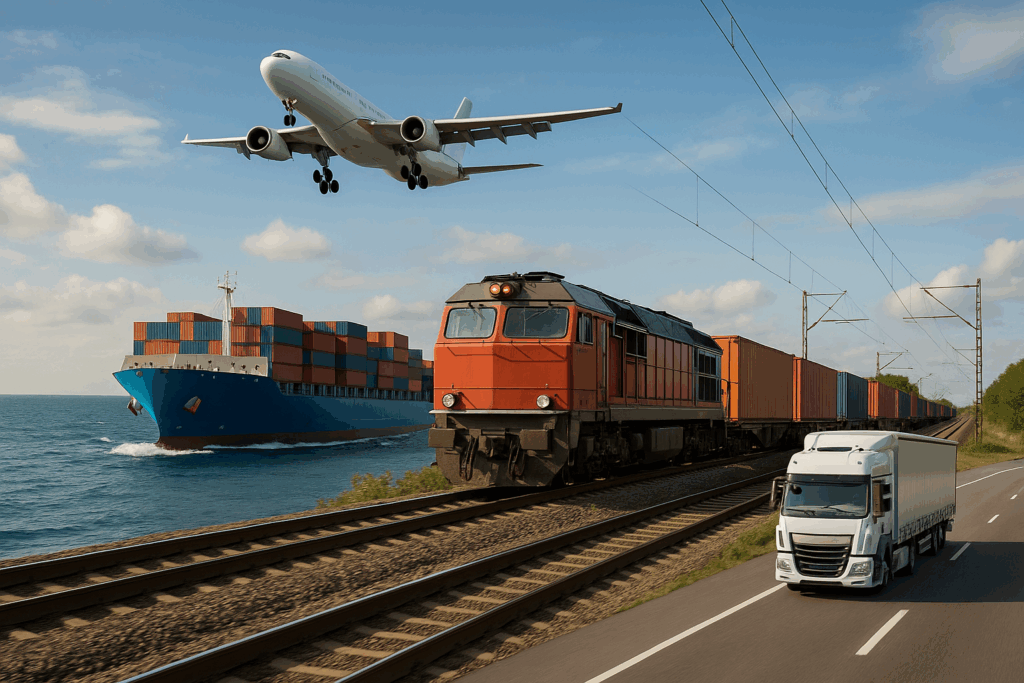In the global supply chain, first mile logistics refers to the movement of goods from their origin—such as factories, suppliers, or warehouses—to the first major logistics hub. This stage often involves truck transport for short to medium distances, rail freight for bulk cargo, or short sea shipping between ports.
A well-organized first mile ensures cargo reaches seaports, airports, or regional distribution centers on schedule, aligning with vessel departures, train timetables, or flight schedules. Proper route planning, timely pickup, and secure loading are essential to prevent delays that can disrupt the middle and last mile stages, ultimately affecting delivery performance and costs.
1. Understanding the Role of First Mile Logistics
The first mile is the foundation of any shipment. If delays or errors occur here, they can cause significant problems in middle mile and last mile delivery. Its functions include:
- Collecting goods from the origin point
- Verifying and labeling cargo for tracking
- Transporting goods to the next logistics hub
- Ensuring documents and customs pre-clearance (if applicable)
2. Common Transportation Methods in First Mile Logistics
- Truck Freight – Ideal for short to medium distances and flexible routes.
- Rail Freight – Cost-effective for bulk shipments over long distances.
- Air Freight – Best for urgent or high-value goods.
- Barge or Coastal Shipping – Used when goods need to be transferred between ports before international shipping.
3. Shipping Time, Conditions & Terms
| Transportation Method | Distance Range | Average Transit Time | Cargo Type | Common Restrictions |
|---|---|---|---|---|
| Truck Freight | 50–300 km | 6–24 hours | General goods, perishables | Traffic conditions, road limits |
| Rail Freight | 300–800 km | 1–3 days | Bulk goods, heavy cargo | Train schedule limitations |
| Air Freight | 500–2000 km | 4–12 hours | Urgent, high-value | Flight schedules, size limits |
| Barge/Coastal Shipping | 50–200 km | 1–2 days | Export cargo | Port operations, water levels |

4. Key Challenges in First Mile Logistics
- Traffic Congestion – Delays during peak travel hours.
- Insufficient Transport Capacity – Lack of available trucks or containers.
- Weather Conditions – Storms, heavy rain, or snow affecting transit.
- Operational Inefficiency – Poor coordination between shippers and carriers.
5. How First Mile Logistics Connects to Middle and Last Mile
- Middle Mile: Moves cargo from regional hubs to distribution centers.
- Last Mile: Delivers goods to the end customer.
Any delay or mishandling in first mile logistics can multiply in cost and time during these later stages.
6. Cost Factors in First Mile Logistics
- Distance and Route Complexity
- Fuel Prices
- Labor and Handling Fees
- Urgency of Delivery
- Value and Type of Cargo
7. Strategies to Improve First Mile Logistics
- Use route optimization software to avoid delays.
- Partner with reliable carriers that have diverse transport options.
- Implement real-time tracking systems for visibility.
- Schedule pickups during off-peak hours.
- Consult TJ China Freight Forwarding for the lowest quote. They will provide you with reliable, cost-effective service.
FAQ:
Q1.What is the main goal of first mile logistics?
To ensure goods are safely and efficiently transported from the origin to the first logistics hub.
Q2. Is first mile logistics more important than last mile delivery?
Both are crucial, but first mile sets the foundation for timely delivery throughout the supply chain.
Q3.Can first mile logistics include customs clearance?
Yes, especially for international shipments where pre-clearance saves time.
Q4.How does technology improve first mile operations?
GPS tracking, automated scheduling, and warehouse management systems increase efficiency.
Q5.What industries rely most on first mile logistics?
Manufacturing, retail, e-commerce, pharmaceuticals, and agriculture.
